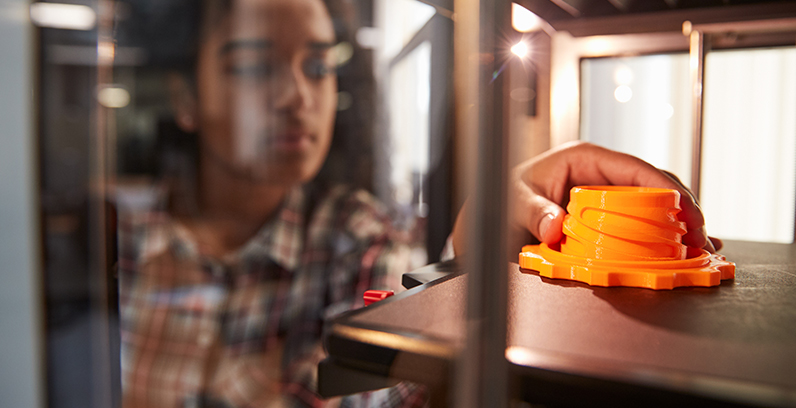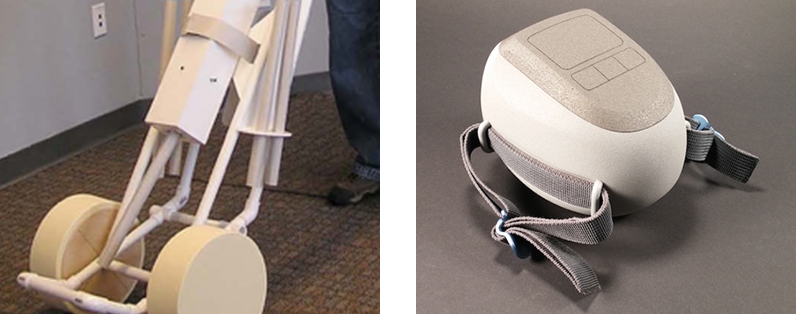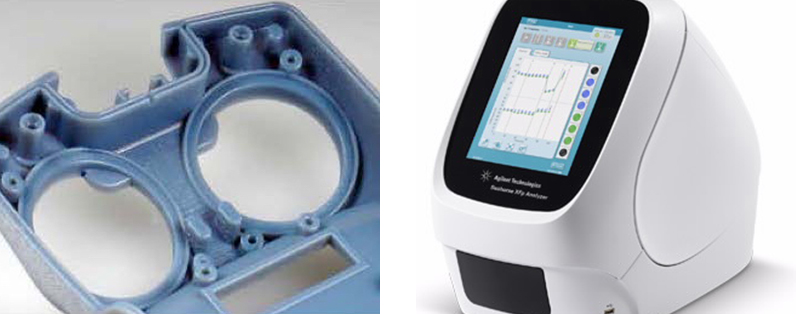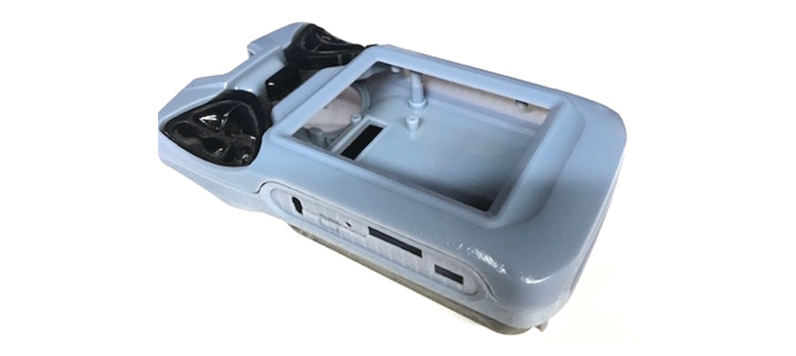Tangents
The New Product Development Process: The Importance of Prototyping
By Joe Schappler

[wtr-time]
One thing that hasn’t changed in the thirty-plus years I’ve been an Industrial Designer is the importance of fabricating physical prototypes. Back in the late nineties, with the onset of 3D CAD, I recall colleagues calling for the end of a need to prototype. Every detail can be seen, reviewed and adjusted in CAD. This new software was going to save time, lower risk and eliminate the time-consuming and expensive prototypes.
What did I do? I went out and purchased a prototype shop and merged it into our company. I knew that 3D CAD was not going to eliminate the need to prototype, but instead was going to allow us to prototype sooner and probably more frequently. That is, as we now know, what happened. And when 3D printing entered the scene, it escalated prototyping even more.
Whether I’m speaking to new clients that are just now looking at the new product development process—or working through a new design with a long-standing client, I often get asked if it’s really important to create as many prototypes as we’ve proposed in our development process.
In fact, I was just having this conversation with a new prospect the other day as he was reviewing our proposal. He asked, “Well, you have so many prototypes in here. Do we really need them all?”
Before I get into explaining why prototyping is so valuable to both design development and the business side of product design, I’d like to establish a baseline for the discussion.
What Is a Prototype?
According to Technopedia, a prototype is “an example that serves as a basis for future models. Prototyping gives designers an opportunity to research new alternatives and test the existing design to confirm a product’s functionality prior to production.”
In our process, we develop prototypes to different levels for different reasons. It may be to explore, demonstrate, evaluate or verify.
Prototyping is Important at All Stages of New Product Design
Let’s look at some of the reasons for prototyping and the different types. In the early stages of product development, I like to think of prototypes as mock-ups. These can be crude, often made out of cardboard, foam-core, soft foam or anything you may have around. Their purpose is to explore ideas, uncover opportunities and basically just try something out in the physical form. It is not uncommon, at least in our design studio, to see designers going back and forth between sketching and mocking an idea up. After all, it’s basically just a 3D version of a sketch, and a very effective tool for learning and communicating.
As development progresses and we move from initial exploration to refinement, concepts begin being developed in 3D CAD. The prototypes used during this effort we refer to as evaluation prototypes. These may be made from several processes, including 3D printing, machining, resin casting, sheet metal forming, and others.
These are learning prototypes– discovery of what works and what doesn’t. You might be evaluating assembly of a product with internal components, wiring paths or sealing. You might use these to gather user feedback on form, ergonomics and other user interface information. Sometimes these may be only a partial build to evaluate a specific feature of a product, such as a hinge or other moving mechanisms.
It is typical for us to do extensive prototyping during refinement as a means to learn from, reduce risk, demonstrate solutions and provide tools to our clients. These can be developed to different levels, from unfinished 3D printed parts to final functional appearance prototypes that represent production intent. Prototyping during development can save time, improve solutions and gather feedback. I am constantly urging our team with “Let’s print it and see if it works.” Some things cannot efficiently be reviewed by staring at a 3D CAD model on a screen.
As we move into the production design effort on a project, we continue to use prototyping to confirm the final design solution. We call these verification prototypes. These can be unfinished prototypes, often 3D printed for plastic parts as a way to verify fit-checks, component assembly and other production requirements. For sheet metal products, we’ll prototype in sheet metal, again to verify the solution works as intended.
Verification prototypes are made from our production design database to ensure our files are accurate prior to release to manufacturing. A discovery made at this time is much easier to correct in the CAD files than if an error is discovered during tool development. It saves time and monies and is an excellent insurance policy. Where human beings are involved, the possibility for errors is always present, although we may not like to admit it.
Prototyping is About People
I remember the first prototype I ever made back in 1984. It was a time clock made out of foam core. I mocked up the exterior housings as well as the internal components. I used foam-core, cardboard for the PCB’s, and urethane foam to represent other small internal modules.
This prototype was created to show the whole assembly of the unit put together. This was long before we were doing things in 3D CAD and was an excellent way to communicate the design. And then I painted the outside with latex paint to make it representative of what it might look like in production.
While we learn a lot from prototyping, it’s really about the human interaction. I could take you into a client meeting, and I could have these beautiful renderings of products out on the table. As soon as I pull out a mock-up and put it on the table, they don’t even know the renderings are there anymore. Clients go right to the mock-ups. Some people can see things in a two-dimensional sketch better than others. Others need to see the three-dimensional form to truly understand the concept. So, it really is an excellent communication tool more than anything.
How Has Prototyping Changed Over the Years?
With the onslaught of 3D printing, which has been the buzz for the last several years, prototyping has seen considerable advances. With 3D printing, we can prototype more frequently in almost real time right in the office. It’s completely changed the speed and the cost at which we can get prototypes. It’s made it much more affordable, and we can do much more of it, and more accurately, because the prototypes are printed right from the 3D CAD files. New materials, from plastics to metals to ceramics, are coming to market, enabling us to get even more functionality from 3D printing.
We still use traditional prototyping techniques, such as machining, resin casting, metal forming, and others. Incorporating 3D printing technology in the toolbox just gives us more to choose from for the specific needs we may have.
Why Does Prototyping Sometimes Get the Hatchet During the Development Process?
One prototype that sometimes gets removed, and is often regretted by the client afterward, is the final verification prototype. They are already familiar with the design solution because they’ve seen what it looks like in the previous phases, and then we try to convince them into doing one more prototype.
Skipping this step does get them into manufacturing sooner, but it doesn’t mean they’ll get to the market sooner. What time and monies they’ve saved can quickly be lost if a change to tooling is needed to be made. That can be much more expensive and time-consuming than making a change to a 3D CAD model. It just makes business sense to make the prototype!
Get additional information on prototyping here, or reach out to us with questions!
About Helix Design
Helix Design is an industrial design firm and product design company that delivers creative design and mechanical engineering solutions to companies who need external perspectives combined with practical experience. For samples of our recent work, please visit our industrial design portfolio.
Do you need industrial design guidance for your next project?
Contact us for an assessment today.




